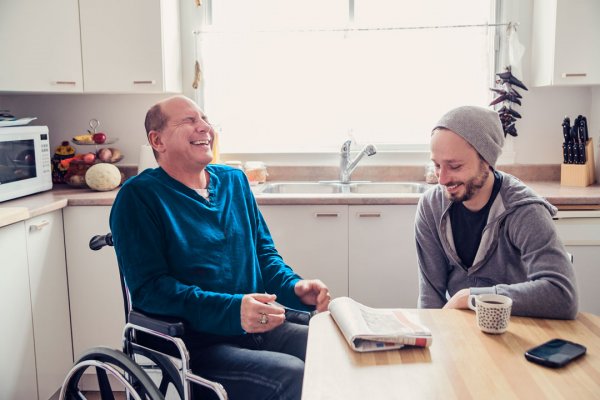With the number of opioid-related overdose deaths in the U.S. reaching a record high last year, it’s time for our nation to fully embrace evidence-based treatment options that best support our communities, loved ones, friends and families in their recovery efforts.
One growing approach—often considered as the gold standard of treatment—is medication-assisted treatment (MAT). MAT is the use of FDA-approved medications in combination with counseling and behavioral therapies to provide a holistic, person-centered approach to the treatment of substance use disorders (SUDs). The use of this treatment approach has grown to nearly 40 percent in residential facilities and is increasingly leveraged by primary care providers nationwide—but more still must be done for widespread adoption.
The most pervasive stigma surrounding MAT is that it merely enables patients to replace one addiction with another. It’s a belief held not only by some groups of doctors and clinicians, but also family members and peer support groups—those whose support is critical to successful recovery. When a patient’s core support system of family members and peers doubts the legitimacy of an evidence-based form of treatment, the likelihood that the patient will follow through long-term is diminished.
Pair that with a lack of understanding and comfort from the medical community around how to administer MAT, limited numbers of physicians who are certified to prescribe this treatment that actually do prescribe the treatment, as well as the number of residential facilities that offer MAT, and we get low adoption rates as a result of these barriers.
There’s a better way to treat opioid use disorder
Although abstinence-based therapy works for a small percentage of those suffering from OUD, MAT offers a successful way for people to fight their addictions in an outpatient environment, in the community in which they live, and avoid hospitalization or institutionalization. It helps those struggling with OUD and other SUDs address underlying conditions that may have contributed to substance abuse—significantly improving the chances of recovery. In one study, more than half of patients utilizing MAT reported opioid abstinence 18 months after beginning treatment.
Today, while 900,000 U.S. physicians prescribe opioids, fewer than 35,000 physicians are certified to prescribe buprenorphine, one of three medications approved to treat opioid addiction. And even fewer actually prescribe buprenorphine to patients. MAT prescribing is not limited to psychiatrists. In fact, primary care providers provide more access to MAT than any other type of provider.
The impact of limited access to MAT on health outcomes cannot be overlooked. One analysis found only one-third of individuals who experienced a nonfatal opioid overdose received access to MAT. Those who received methadone were linked to a 59 percent decrease in mortality rates after one year, according to the analysis. Additionally, individuals who were treated with buprenorphine were associated with a 38 percent decrease in mortality after a year.
Increasing Access to MAT
The SUPPORT for Patients and Communities Act, signed in October 2018, expands the ability to prescribe MAT by increasing clinician eligibility for certification. This provision is a solid and necessary step toward broadening access to treatment; however to make a true impact on the opioid epidemic, we must break the stigma surrounding MAT.
When it comes to recovery, the potential for relapse is high, especially in the early stages when resolve is fragile. It is important to note that for individuals with co-occurring mental health conditions, chronic pain or other addictions, MAT should be supplemented by treatment for those conditions, such as cognitive behavioral therapy. Building in care management support to assist in navigating the treatment process may reduce the possibility of relapse and/or readmission to a substance abuse inpatient or residential rehabilitation program. It also helps provide individuals with the tools needed to live addiction-free.
By taking the time to dispel the myths about non-traditional addiction treatment like MAT, we create an environment that more fully supports a return to complete health—physical, mental and emotional. Fighting the stigmas around MAT is an important step toward enabling those suffering from OUD to recover from their addiction and live healthy, vibrant lives.




It’s good that you point out that medication-assisted treatment for drug addicts can help reduce their risk of relapse and death. My brother is addicted to heroin, and I’m considering finding medication-assisted treatment for him for that reason. I’m going to look for a good provider of medication-assisted drug addiction treatment in my area.